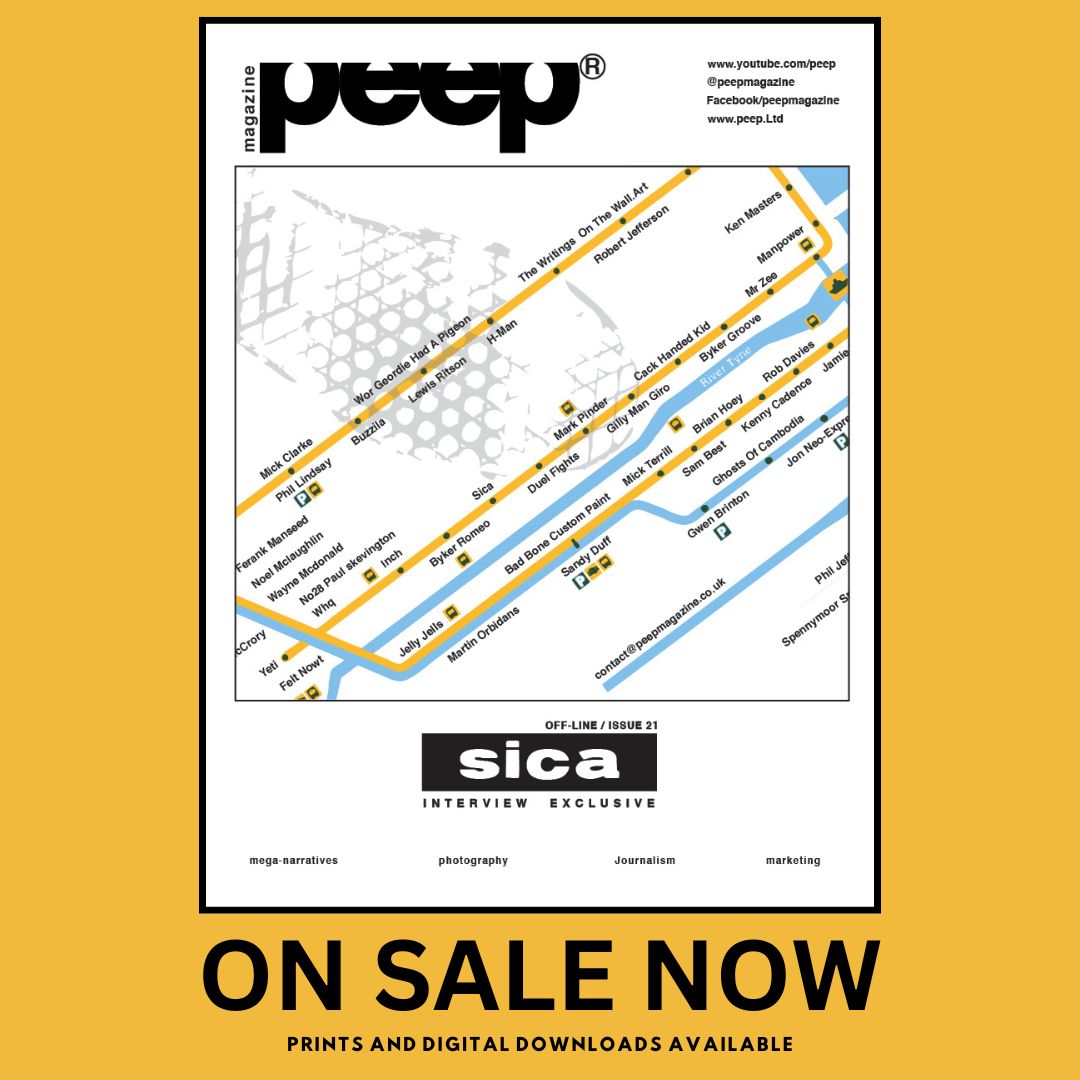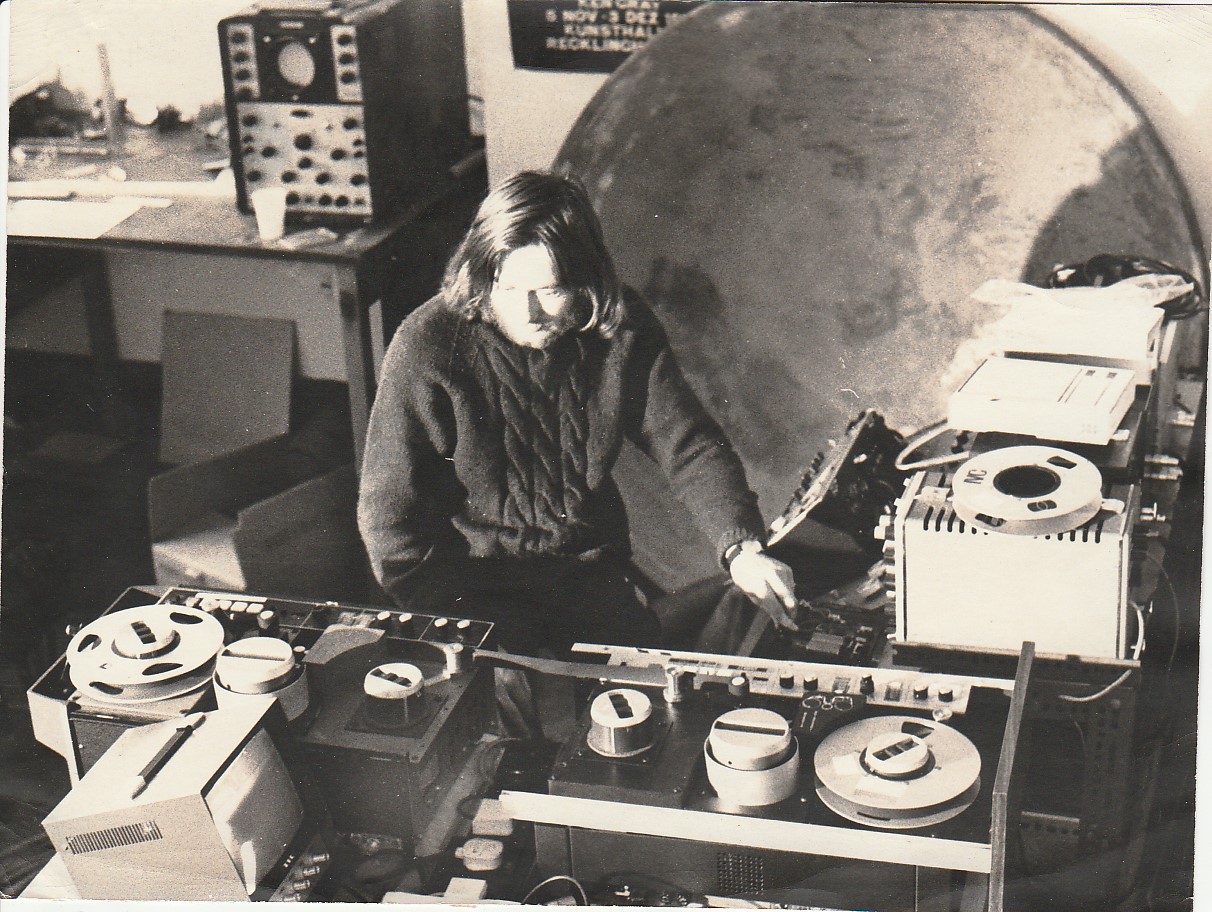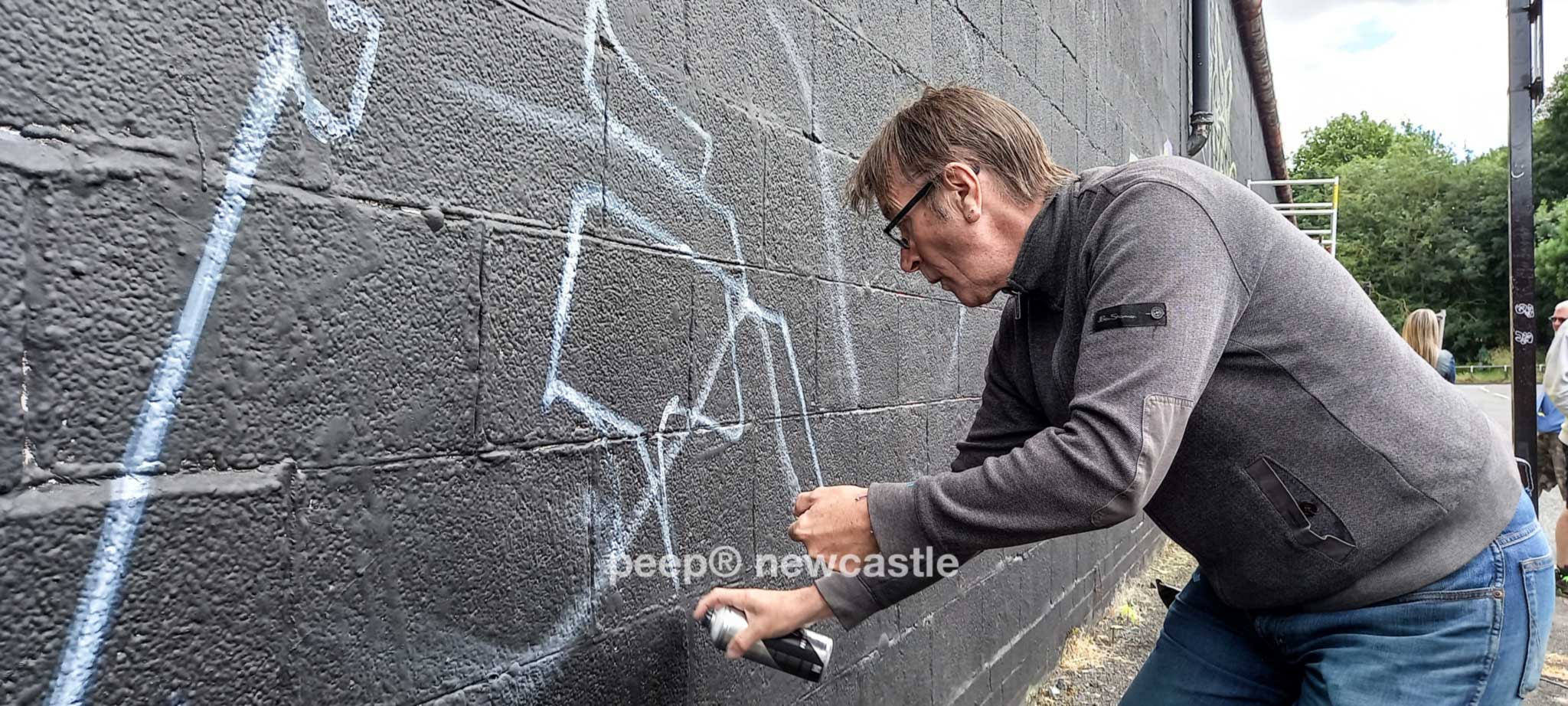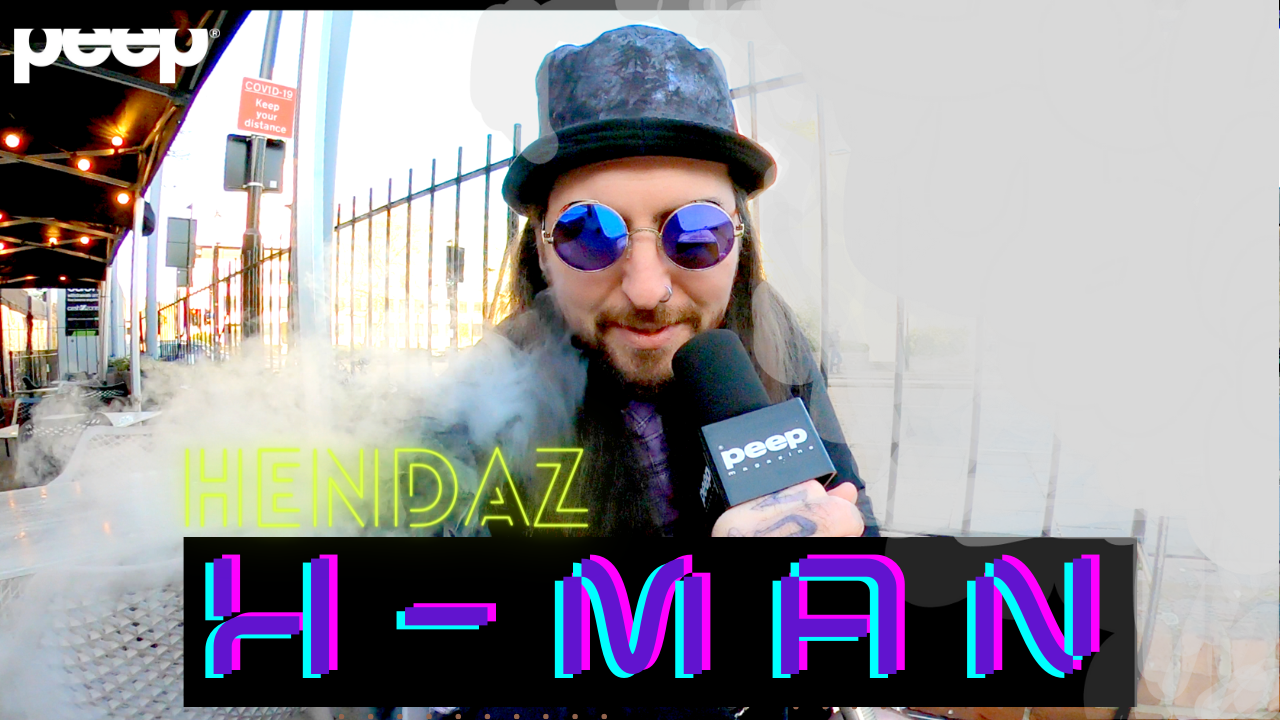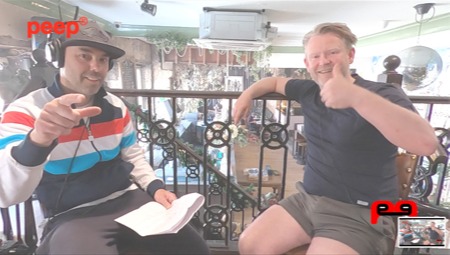Videvent Video Brian Hoey A Pioneer in Video Art Installations.We talk processes and interactive systems with peep® Newcastle
Videvent Video Brian Hoey. peep caught up with a former course leader to talk with Brian Hoey – at Northumbria University. We asked Brian to pop into our studio, but with restrictions being the way they were, made this impossible ! However, we kind of got something a little different, as Brian had some recent good news in the respect to the work he pioneered back in the 1970s. Tate Britain have decided to create an archive of the work, with partner, Wendy Brown. peep plan to keep you updated and informed of this nostalgic masterpiece
We were kind of inspired by Brian Hoey and wanted to hear more of his story…
Videvent Video Brian Hoey : I did a foundation course at the art college in Hartlepool a few years after Ridley Scott was a student there. Then I wanted to get as far away from the north east as possible and managed to get accepted by Exeter College of Art.
On the first day we were told that we would be weeded out at the end of the first term, second term and first year. Somebody was so shocked they went for lunch and never came back. I made it through the first year but my work was all over the place, I couldn’t settle to anything and was passed from the painting school to the sculpture school. At the end of the first year I was given one more term to improve or be thrown out.
At the start of the second year I was moved again: to the stained glass department. This was on the top floor of an old building. In fact I’m not sure that many people knew it was there. I discovered that it was more than stained glass as it had facilities for working with perspex. I realised that I was the only student. There was a very laid back lecturer, Mike Bartlett, who seemed to read the paper and smoke all day. Some afternoons he went to the races.
I was very interested in colour and began to make perspex boxes with lights inside that I can only describe as light paintings.


After six months Mike Bartlett told me that he hadn’t understood a word that I’d ever said. I had a Hartlepool accent and a bad stutter. Funnily enough that broke the ice and we began to get on a lot better. He sussed that I was scared of the bandsaw so he gave me a load of perspex offcuts and told me to cut them in two. Then he locked me in while he went for lunch! When he came back I was a whizz on the saw. He also sussed I was nervous about using the phone (we didn’t have one at home) so he made me phone in all the orders for perspex and other stuff.
Anyway, I began to experiment with controlling the lights in my ‘paintings’ with sound using Disco units. Then I realised that I could use the sounds made by the people in the gallery space to control the lights in my sculptures. I made a 6 foot tall perspex column that responded to the sounds made near it. Of course when people realised they were affecting the column’s behaviour they experimented by making different sounds. Suddenly a whole new world opened up. I wasn’t making ‘dumb’ artworks, I was making interactive systems in which the object and the people were both interacting in a closed loop feedback system. I made several more of these systems: some worked by touch, others by movement. My final degree show included a room I’d made with backlit walls, ceiling and a reflective floor that changed colour when people moved around. They didn’t throw me out and I got a first. I also got accepted for postgraduate study at the Slade School of Fine Art, University College London.


While at Exeter I met Wendy Brown, another student, who had grown up in Redcar, just across the bay from Hartlepool. We’re still together.
I owed Mike Bartlett a huge debt for teaching me how to design stuff and giving me the run of the department. He let me buy synths, tape recorders and we set up a small recording studio. By this time other students had joined the department and it became a thriving area of inventiveness. I believe it still is.
Just before I left Mike told me that he didn’t really like my work but his job wasn’t to like it but to bring out the potential in me. That stuck with me and I used that attitude years later when I became a lecturer.
I wrote my thesis on psychological research into the effects of colour on emotion and discovered that not everybody had the same strong emotional response to colour that I had. At the Slade I decided I needed something other than colour to arouse people’s emotions. Before I go on about myself some more I’ll devote some time to Wendy’s work at college.
Wendy Brown was the second student to work in the Stained Glass Department. Around this time it was re-named ‘Light Sound‘. She also began making structures using light and that were participatory but quite different to mine. One involved moving illuminated boxes around tracks that changed colour when they ‘met’ other boxes. (She blew the college fuses on one occasion – it was amazing what they let us do. No Health and Safety regs then but we learned fast the hard way.) After about six months our tutor, Mike Bartlett, asked her what she was doing there as nobody on the staff had told him he had a new student.
After making a number of light/participatory structures Wendy developed an interest in human behaviour. Her degree show involved a game in which two people wore visors to remove their sight and then stalked each other with ‘rayguns’. When somebody got hit with the flash from the gun it hit a photocell and made a high pitched squeal in their ear. This was many years before ‘Quasar’, maybe somebody pinched the idea from her.
She also built a radio controlled robot that navigated around the space to hunt the visitors to the show with its own light. To get out of the exhibition you had to open a locked door. You could open the door by paying 10p (a reasonable amount back then) or press a handle ten times. The only trouble was that the handle gave you a mild electric shock every time you touched it. We were amazed that the vast majority of people took the shocks rather than pay 10p. Her thesis was called ‘Proxemics: an aspect of behaviour‘. The staff at the art college didn’t feel qualified to mark it so it was sent to Exeter University. She got a first for the thesis and another first for her practical work.
ART SYSTEMS / MODERN ART
At the Slade, I decided that people interacting with their own image might be a powerful way to create an interactive artwork or ‘art system‘. I thought about using mirrors but decided that an electronic system would be best. Video seemed the best solution apart from one thing: the college had no video equipment. After a while, I discovered that University College London had a small audio-visual department and University of London had a TV studio.
These were used for making pretty straight productions; recording lectures etc. Somehow I got the technicians enthused about my ideas and managed to get little bits of time to experiment. Eventually, I created a participatory installation which ended up with the name ‘VIDEVENT’ Brian Hoey. This was using one inch monochrome, reel to reel video recorders. The participants saw an image of themselves mixed or keyed with an image of themselves several seconds beforehand.
VIDEVENT Video Art / BRIAN HOEY
Once I left college I showed VIDEVENT video art Brian Hoey in a shop window at the Kendal Gathering, Exeter College of Art and was invited to show it in a major international exhibition ‘The Video Show’ at the Serpentine Gallery, London. The following year I was invited to participate in ‘Video Show‘ (how imaginative) at the Tate Gallery.

This was the first time that the Tate had shown video art and word was that the trustees were somewhat nervous as to the reception it might get. This time I had the budget to enlarge the piece with five monitors on display rather than the single monitor I had used in previous exhibitions.
Two monitors showed the ‘present time’, two showed images from a few seconds beforehand and the central monitor showed these combined; along with this visual echo there was an audio echo. It was a great success. One American honeymoon couple came everyday and spent a long time participating quite theatrically (you’d have thought they’d have other things to do).
I never showed it again and didn’t make another video installation for twenty years. I concentrated instead on making video tapes and working in other media.

